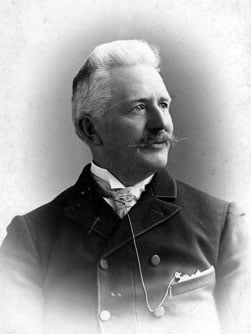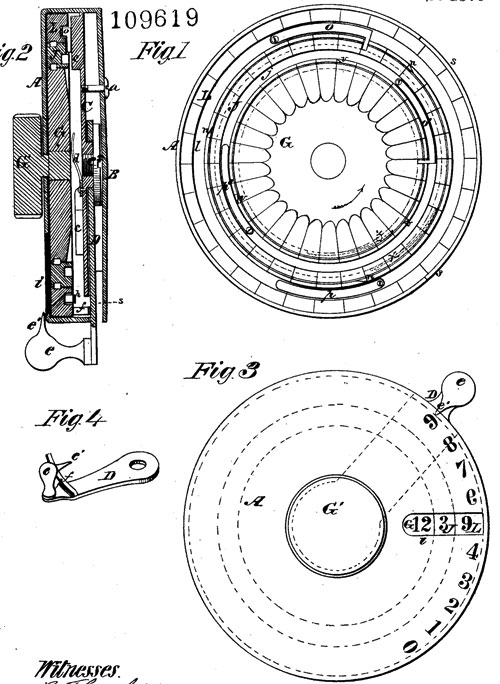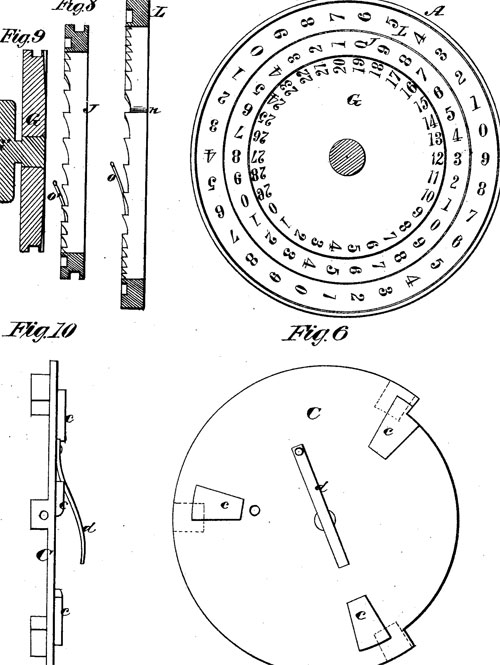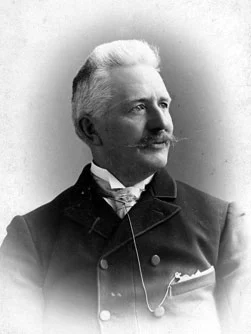
Henry Alonzo House
Key Facts:
- Henry House was an extremely prolific American inventor, who secured over 300 US and foreign patents.
- Like other inventors of his time, House invented a calculating device.
- House went on to invent an incredible buttonhole machine that that revolutionized the sewing industry.
Henry Alonzo House (1840-1930) (see biography of Henry Alonzo House) was an extremely prolific American inventor, who secured over 300 US and foreign patents. Interestingly, one of his early patents (US Patent No. 109619) from 1870 is for a calculating device.
The calculator of Henry House (see the patent drawing below) is a 4-positional column adder, composed of a series of concentric rings, numbered with digits in regular order from 0 to 9, consists in combining with the mechanism which will move the rings forward, a mechanism which will move them back again for commencing the calculation with any given number.

There are thirty characters on each one of the rings, and a corresponding number on the wheel , so arranged that, when all the numbers on the rings representing the same value are opposite each other, these rings will be engaged with each other by the pawl, and when the cipher on the wheel is opposite either one of the corresponding marks on the ring, the pawl will engage the latter with the former; consequently, by turning the wheel in the direction indicated by the arrow in fig. 1, three ciphers can be brought in line with each other opposite the opening, through the front of the case.
There are thirty ratchet-teeth on the back of each one of the rings L J, so spaced that, when the rings are adjusted, as shown in fig. 1, their teeth will be in lines coinciding with the teeth on the back of wheel
The teeth on the ring are acted upon by a spring-pawl, , on a vibrating arm,
The teeth on the ring are acted upon by a hooked spring-pawl, and the teeth on wheel are acted on by a hooked spring-pawl, o’
Before using the instrument to calculate, the knob G’ is turned until the ciphers on the wheel , the ring , and ring are brought in line opposite the slot . The instrument is then held in the left hand: with the fingers of the left hand or right hand the arm is vibrated, and its pointer c’ moved opposite of the required number marked on the face of the case, each time moving the arm back as far as it will go.

The first ring will indicate the units column, the second ring will indicate tens, and the third ring will indicate hundreds and thousands.
By means of the wheel and its external knob G’, the rings can be quickly turned back to the ciphers, or to any required numbers.
House Went on to Invent the First Buttonholing Machine
House went on to invent a buttonhole machine used during the Civil War that enabled manufacturers of army coats and capes to produce 1,200 buttonholes a day. This invention was an important improvement over cutting buttonholes by hand – even if the workers in the shop where the trial took place destroyed it after hours. It was replaced by the shop owner and went on to produce over 100,000 buttonholes during the war efforts.
The image featured at the top of this post is ©Unknown author / public domain


